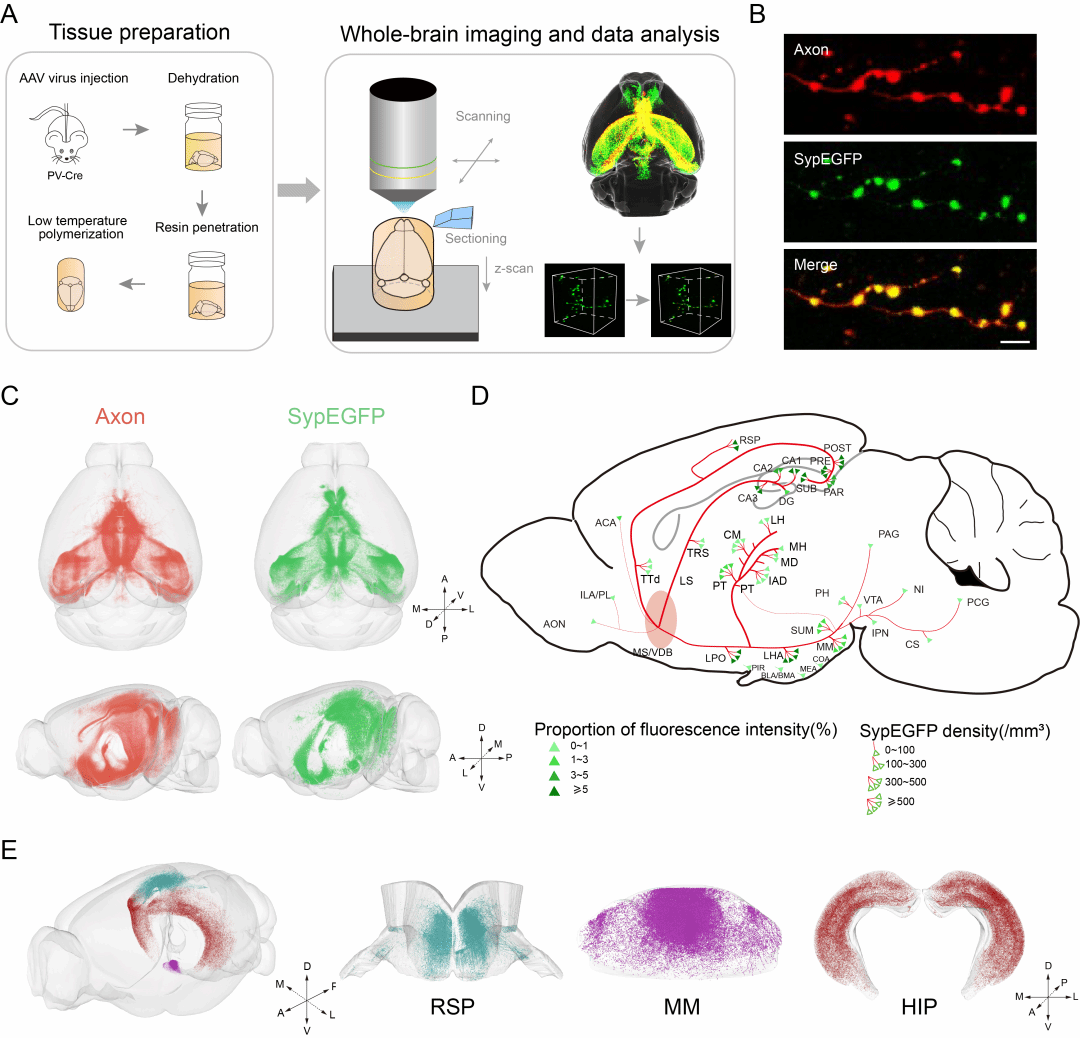
Abstract:
Through synaptic connections, long-range circuits transmit information among neurons and connect different brain regions to form functional motifs and execute specific functions. Tracing the synaptic distribution of specific neurons requires submicron-level resolution information. However, it is a great challenge to map the synaptic terminals completely because these fine structures span multiple regions, even in the whole brain. Here, we develop a pipeline including viral tracing, sample embedding, fluorescent micro-optical sectional tomography, and big data processing. We mapped the whole-brain distribution and architecture of long projections of the parvalbumin neurons in the basal forebrain at the synaptic level. These neurons send massive projections to multiple downstream regions with subregional preference. With three-dimensional reconstruction in the targeted areas, we found that synaptic degeneration was inconsistent with the accumulation of amyloid-β plaques but was preferred in memory-related circuits, such as hippocampal formation and thalamus, but not in most hypothalamic nuclei in 8-month-old mice with five familial Alzheimer’s disease mutations. Our pipeline provides a platform for generating a whole-brain atlas of cell-type-specific synaptic terminals in the physiological and pathological brain, which can provide an important resource for the study of the organizational logic of specific neural circuits and the circuitry changes in pathological conditions.
全文链接:https://www.pnas.org/doi/full/10.1073/pnas.2202536119